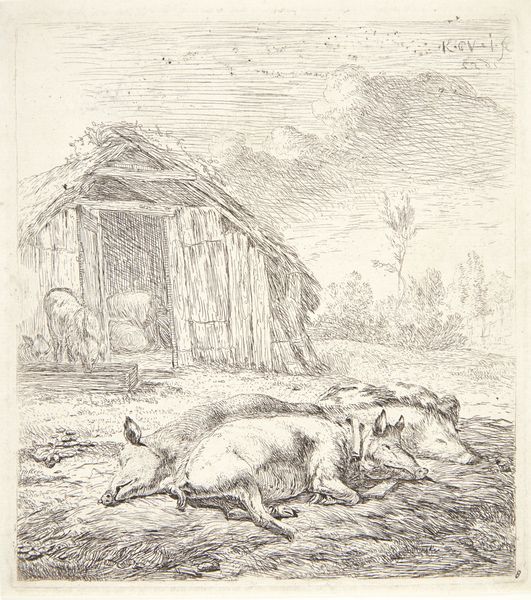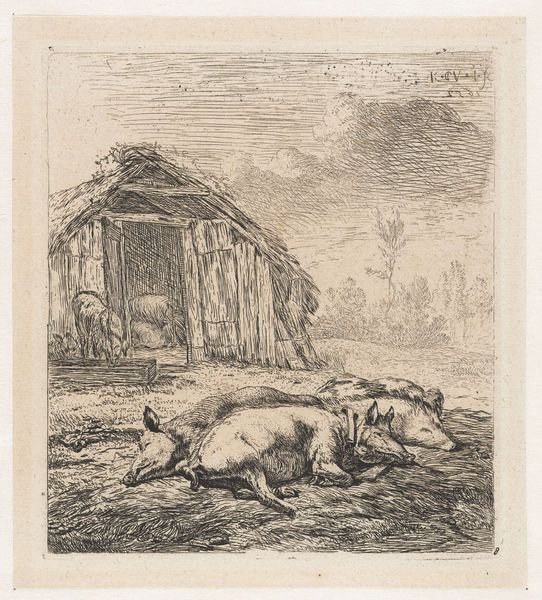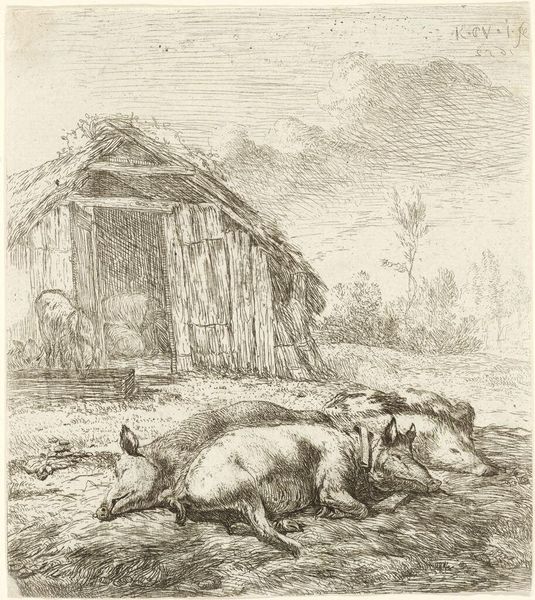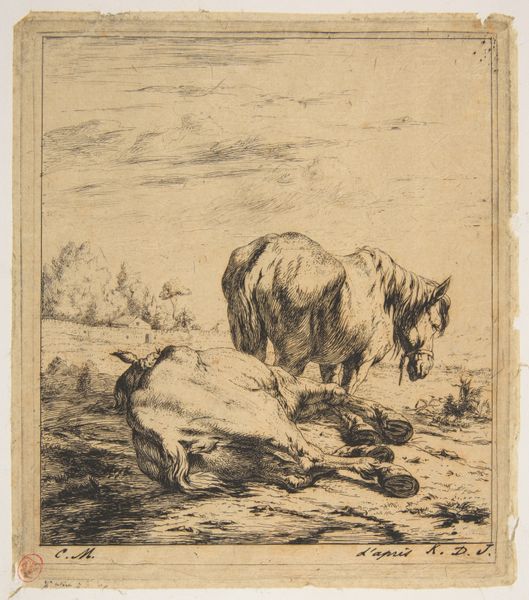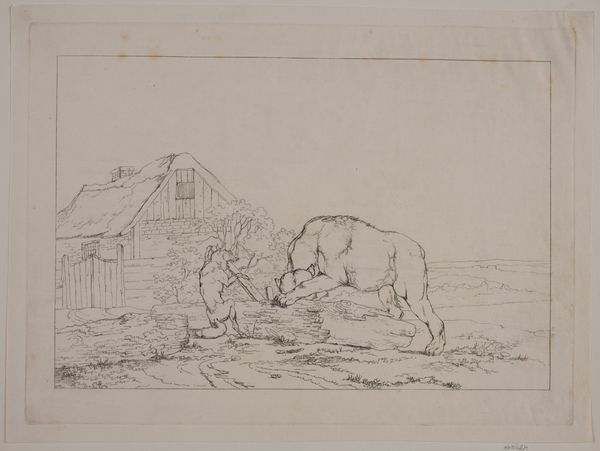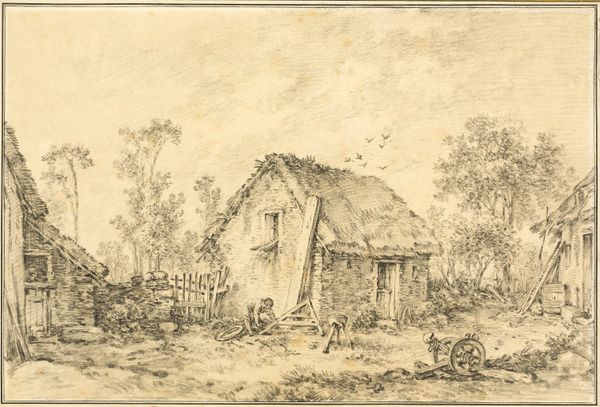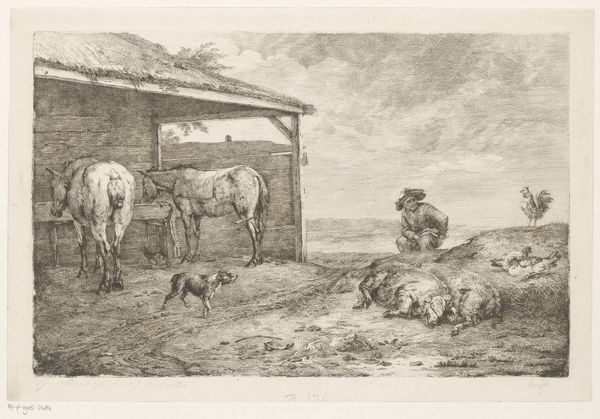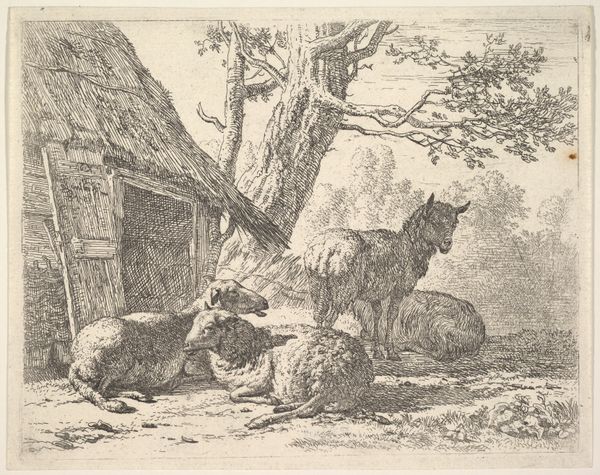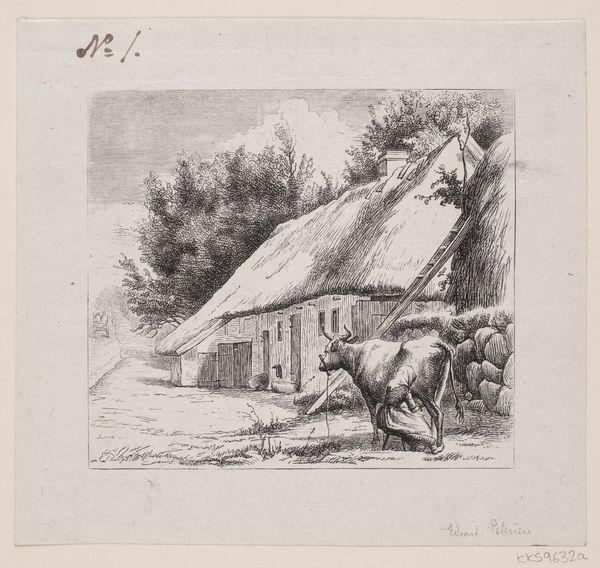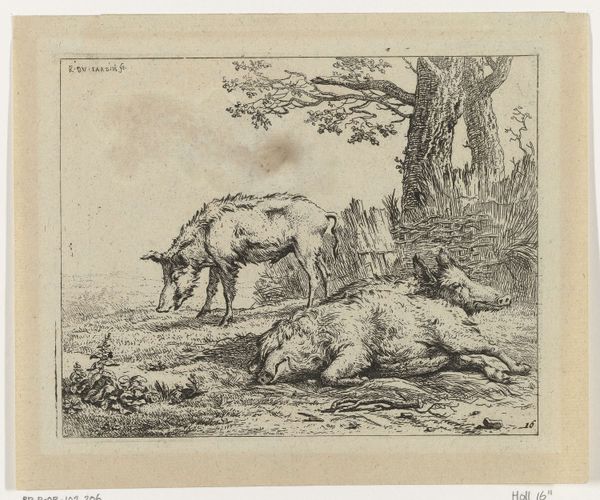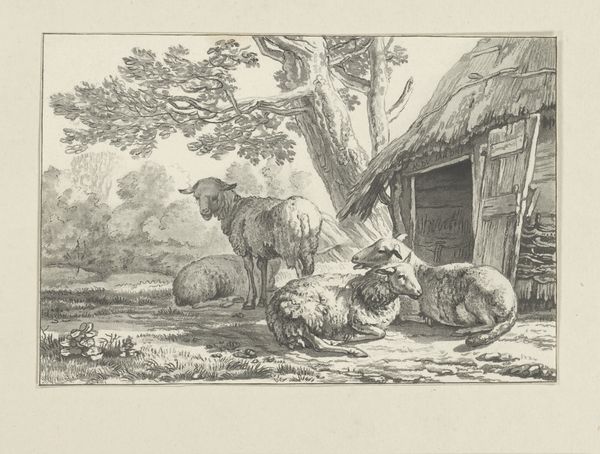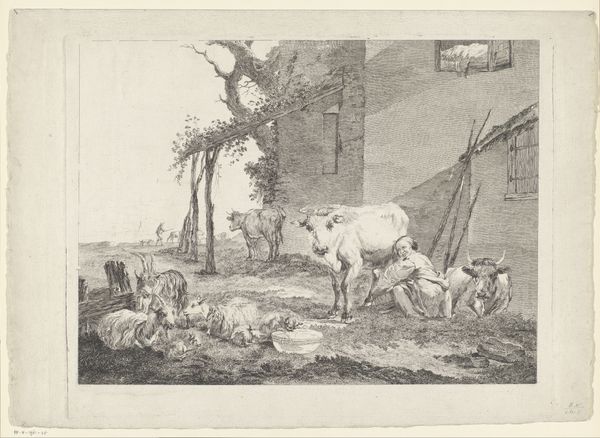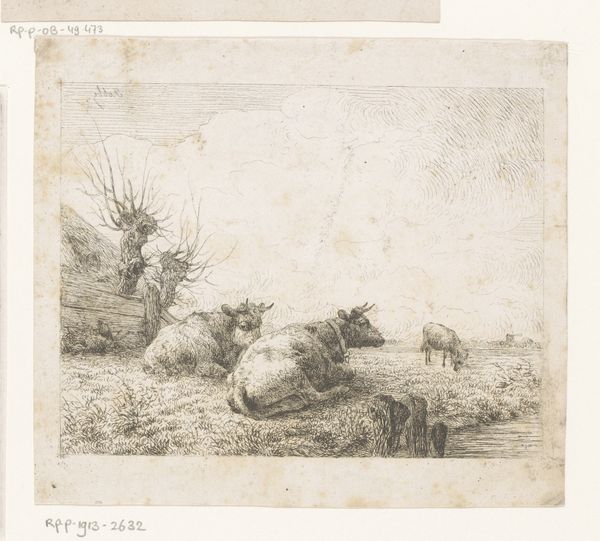
drawing, print, etching
#
drawing
# print
#
etching
#
landscape
#
pencil drawing
#
genre-painting
#
realism
Dimensions: plate: 6 3/8 x 5 1/2 in. (16.2 x 14 cm)
Copyright: Public Domain
Editor: So, here we have Charles Meryon's "Three Pigs Lying in Front of a Shed," an etching from 1850, currently residing at the Met. There's something about the weariness in those pigs that really strikes me. What do you see in this piece? Curator: It's tempting to view this simply as a quaint rural scene, but it's vital to consider the social context of the mid-19th century. Rural subjects gained popularity, didn't they, but how are they *represented*? This seemingly innocent scene, created during a time of significant social and economic upheaval, raises interesting questions. Editor: How so? What questions are you thinking about? Curator: Well, who is the audience for this print? Was it intended for the urban bourgeoisie, perhaps yearning for a romanticized view of country life that concealed the hardships of rural existence? Are the pigs stand-ins for the working class? What is being conveyed about class structure? The artist also presents pigs, which many cultures judge. Are we laughing "with" them, or "at" them? Editor: I never thought about the intended audience before. The pigs just seemed... peaceful. Do you think Meryon had those things in mind? Curator: It's difficult to say definitively, of course. Artists are always constrained by the culture around them. Whether consciously or unconsciously, art is influenced by socio-political undercurrents. Even ostensibly straightforward genre scenes participate in the dominant discourses of the time. How does the placement of the shed function, almost like another character? Editor: That's true, it could symbolize enclosure or limited prospects. It’s given me a lot to think about regarding the portrayal of everyday life. Curator: Precisely. Looking beyond the surface to unpack its possible implications enriches our viewing experience immensely.
Comments
No comments
Be the first to comment and join the conversation on the ultimate creative platform.
